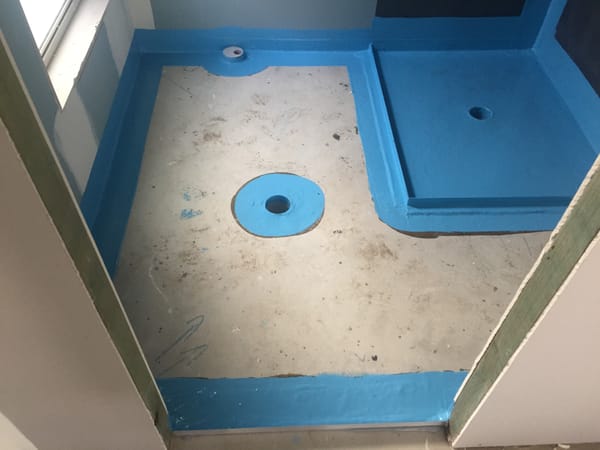Do progress claims in construction projects stress you out?
You're not alone. As a builder, managing the paperwork and ensuring you get paid properly for the work you've done can be frustrating. On top of actually doing the construction work, you have to keep accurate records, fill out forms, and deal with disputes. But it doesn't have to be that complicated. With the right approach, you can streamline the progress claims process and get paid on time, every time.

What Are Progress Claims?
Progress claims allow builders and contractors to get paid in instalments for work completed during a construction project. Rather than waiting until the end of the project to receive full payment, progress claims mean you get paid at agreed-upon milestones.
What triggers a progress claim?
Progress claims are typically triggered when a stage of work has been finished, like completing the base stage, frame stage, or enclosed stage. Your construction contract will outline the payment schedule, specifying the percentage of the total contract price due at each milestone.
How do you prepare a progress claim?
First, review your contract to determine what stage of work needs to be completed to trigger the claim. Once the work is done, submit drawings, photos, and other documents as evidence. Your claim should include a summary of the work completed, a trade summary and the percentage of work done, and the amount owing. Double-check that everything is in order before submitting to the client.
What if your claim is disputed?
Don't panic. Disputes happen, but that doesn't mean you won't get paid. Contact your client right away to discuss their concerns. You may need to provide clarification or additional documentation. Be open to negotiating if needed. It may be best to meet the Client onsite and to walk through, show and speak to the details of the progress claim and ask if it makes sense to the client and discuss any questions they have.
If that doesn't work, you may need to get legal advice to determine the next steps to resolve the dispute, which could include alternative dispute resolution like arbitration or mediation. The building contract will clearly detail the dispute resolution process so be sure to read this first before taking any legal action.
The key is keeping the communication lines open, providing thorough documentation of the work completed, and not letting a dispute derail the progress of construction. With the right approach, you'll get your progress claims approved and paid on time.

The Importance of the Progress Claim Summary
The summary of work is key to getting paid properly for residential construction work. This document breaks down the total contract price into values for each part of the work. It ensures you'll receive payments as major milestones are reached, rather than waiting until the very end.
When putting together your schedule of values, make sure to allocate realistic percentages of the total contract price to each stage of work. For example, you'll want higher values for the initial site work, foundations and framing. The finishing trades like painting, flooring and landscaping will likely make up a smaller portion of the total.
Be as detailed as possible in your schedule of values. Break each stage of work down into components and allocate a value to each one. This makes it much easier for the client and contract administrator to evaluate your progress claims. They can clearly see what percentage of each component is complete and the value owed.
Disputes often arise when schedules of values lack sufficient detail. If a single line item is allocated 20% of the total contract price, but the work is only half done, how much should you be paid? Without a breakdown into components, it's difficult to determine a fair value for the work completed.
Schedules of values are meant to be flexible documents. As work progresses, you may need to reallocate values between items or add and remove components. Discuss any required changes with the client and contract administrator to get sign-off before submitting the next progress claim.
Keeping your schedule of values up-to-date and transparent is key to getting paid on time and avoiding disputes. With a well-thought-out schedule in place, you'll sail through the progress claims process.
Reviewing Subcontractor Invoices
As the principal contractor on a residential construction project, it's your responsibility to review and approve the invoices from all subcontractors before including their costs in your progress claims. Carefully going over each invoice will ensure you're only paying for work that's actually been completed, and catching any errors or overcharges.
When subcontractor invoices come in, double-check that all details on the invoice match the details in your contract with that subcontractor. Make sure the invoice clearly states the project address, invoice number, date, and that the billed amounts match the agreed-upon prices for labour and materials. Compare the work described on the current invoice with the work completed in previous invoices. There shouldn't be any overlaps or repeats.
Physically inspect the work that's being billed before approving the invoice. This is the only way to confirm that the work has been done to the expected standard, and that the billed hours and material quantities are accurate. If anything looks off, discuss it with your subcontractor right away. It's best to resolve disputes over invoices before they become bigger problems.
Once you've reviewed the details and inspected the work, you'll either approve the full invoice amount, approve a partial amount, or dispute the entire invoice. Provide clear notes on the invoice explaining your decision either way. Keep copies of all approved and disputed invoices for your own records.
Only include subcontractor costs in your progress claims that you have personally reviewed and approved. This protects you from overpaying or paying for unfinished work, and ensures a smooth claims process with your client. Maintaining good communication with your subcontractors and verifying their invoices is key to running an efficient construction project.

Using Photographs as Proof of Work
Using photographs as proof of the progress of work completed on a construction site is a great way to provide indisputable evidence for your progress claims. As the old saying goes, “a picture is worth a thousand words”. Photographs offer a visual record of the work that has been done, the materials used, and the current state of the site.
When submitting progress claims, include photographs of the key areas where work has been completed since the last claim. Make sure the photos are high resolution, clearly show the details of the work, and are labelled with details about the location on site and work that has been done. It is a good idea to take photos from multiple angles to give the full picture.
Provide a logical sequence of photos to show the step-by-step progress. For example, if you have installed roof trusses, include photos of the installation process from installing the first truss through to the completed truss structure. This helps provide context and show the work has been done systematically according to the construction schedule.
Photographic evidence is particularly useful if there are any disputes over the validity of your claim or the value of work completed. Dated photographs provide a concrete timeline of progress which can be used as proof if clients question the timing or extent of work done.
When used properly, photos are a simple but highly effective way to substantiate your progress claims and ensure timely payment. Submit your photos along with a cover letter for each claim restating the details of work completed and the total claim value. Reference the attached photos in your letter to direct the client’s attention to the visual evidence provided.
Following these best practises for using photos as proof of work will result in faster approval of your claims and fewer payment issues. Photographs, when used systematically and with clear descriptions, offer definitive proof that you have earned the progress payment requested.

Top Tips for Submitting Progress Claims
To get your progress claims approved and paid on time, follow these top tips:
1. Submit claims regularly and on schedule
Stick to the payment schedule outlined in your construction contract. Waiting too long between claims or submitting late can delay payment and complicate the approval process.
2. Provide detailed documentation
Include copies of permits, invoices, timesheets, and other records to substantiate the value of work claimed. Photos of the completed work can also help support your claim. The more evidence you provide, the faster your claim can be reviewed and approved.
3. Double-check measurements and calculations
Ensure all quantities, rates, and totals are accurate before submitting your claim. Simple math errors can lead to delayed payment while the discrepancies are resolved. Measurements should be checked onsite to confirm the work has been completed as claimed.
4. Resolve any disputes quickly
If there are any items in dispute, address them promptly with the client or certifier. Unresolved disputes will hold up the entire claim, so clarify any questions or issues right away. Be prepared to provide additional documentation, and information and be willing to meet the Client in person onsite as soon as possible to get the disputed items approved.
5. Follow up on overdue claims
If you haven’t received payment within the allowed time period, follow up with the client immediately. Send a formal letter re-submitting your claim and requesting prompt payment. Be professional but persistent until you receive the outstanding amount. Failure to follow up on late payments can jeopardise your right to recover the money owed.
6. Keep good records
Maintain detailed records of all progress claims submitted, amounts paid, and payments outstanding. This paperwork trail will ensure claims are paid correctly and on time, and provide evidence in case of any payment disputes.
Following these best practices for submitting progress claims will streamline the payment process, reduce delays, and ensure you recover the full value of the work completed. Staying on top of the documentation and following up promptly on any issues will make the payment process as simple and painless as possible.
Conclusion
By following the steps outlined, submitting accurate and timely claims, and maintaining open communication with all parties involved, you'll set yourself up for success in getting paid promptly and avoiding messy payment disputes.
Keep your paperwork organised, take plenty of photos to document progress, and don't be afraid to ask questions if anything is unclear.
While the process can seem complicated, breaking it down into manageable milestones will make it much less daunting. If you do hit any roadblocks, stay positive - there are always solutions and resources to help get your project back on track. With hard work and persistence, you'll get there.







